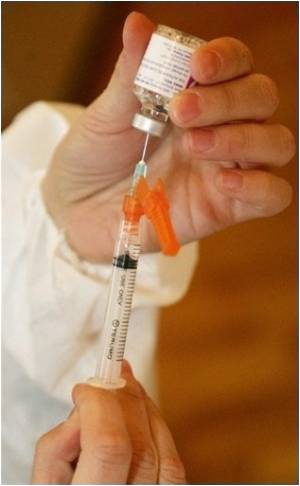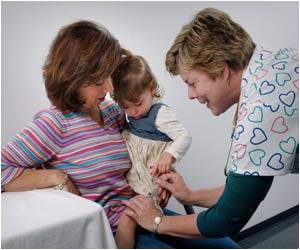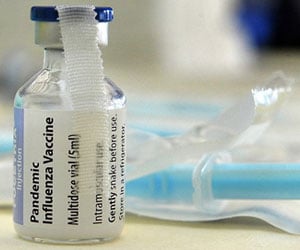
While current vaccines are designed to be safe for most patients, their ability to produce an immune response needs to be strengthened by the presence of adjuvants, which are chemical or biological additives that prime the immune system to respond to the vaccine antigen. Adjuvants also are responsible for many vaccine-associated adverse events, which is particularly problematic for influenza vaccines. As a result, most flu vaccines recently available in the U.S. – including the vaccine against the H1N1 strain responsible for the 2009 pandemic – contained no adjuvants, probably limiting their effectiveness. Although intradermal vaccines should produce stronger immune protection than conventional vaccines, chemical adjuvants produce strong inflammatory reactions when delivered intradermally, so currently available intradermal flu vaccines contain no adjuvants.
Previous research conducted at the St. Petersburg Military Medicine Academy in Russia and at the Wellman Center for Photomedicine at MGH found that visible laser light enhanced vaccine responses in both humans and mice but did not remove the need for a chemical adjuvant. In addition, visible laser light is absorbed by the skin pigment melanin, reducing its effectiveness in individuals with darkly pigmented skin. Near-infrared light – light with a wavelength just below that of the visible spectrum – is absorbed by water and not melanin, with little change in absorption across the range of human skin color. These features led the MGH team to investigate the potential of near-infrared laser light as an alternative to chemical vaccine adjuvants.
First the researchers determined the maximum near-infrared laser dose that would not cause inflammation or tissue damage in the skin of mice. They then tested that dosage level – about one-tenth the dosage used for FDA-approved applications like hair and tattoo removal – in darkly-pigmented human volunteers, none of whom reported any significant discomfort after up to two minutes' exposure. Close examination of the treated areas of participants' skin showed no tissue damage. Another experiment determined that one minute of near-infrared laser treatment was sufficient to increase the generation of antibodies to a protein used as a model vaccine and more than doubled concentrations of dendritic cells – immune cells activated by current adjuvants – in treated areas.
To evaluate the effectiveness of near-infrared laser as an influenza vaccine adjuvant, the researchers pretreated mice with near-infrared laser, visible green-light laser or the commonly used adjuvant alum before administering an intradermal influenza vaccine. The near-infrared laser induced a more complete antibody response to the vaccine than either the visible-light laser or alum without inducing an allergy-associated antibody. Four weeks after receiving vaccine adjuvanted with either near-infrared laser, visible light laser, alum or no adjuvant, mice were infected with a potentially lethal influenza virus. The animals treated with near-infrared laser just prior to vaccination had significantly less virus in their lungs four days after infection and their survival rate was almost as good as those receiving the alum adjuvant. The visible-light laser produced no significant improvement in survival.
"Depending on the particular assay used, near-infrared laser induced a nearly 100-fold increase in the efficacy of influenza vaccination in these animals," says Satoshi Kashiwagi, MD PhD, of the MGH Vaccine and Immunotherapy Center, lead and co-corresponding author of the PLOS ONE report. "We believe the same approach could be used with other vaccines – such as tuberculosis, polio and malaria – for which intradermal administration is either approved or being evaluated. The effects of the laser adjuvant may last up to six hours, so in the case of mass vaccination programs, pretreatment could be done right before the vaccine is administered."
Advertisement
Additional co-authors of the PLOS ONE paper include Jeffrey Gelfand, MD, and Timothy Brauns of the MGH Vaccine and Immunotherapy Center and collaborators from Keio University in Japan. The study was supported by grants from the National Institutes of Health, the Defense Advanced Research Projects Agency, the Bill and Melinda Gates Foundation, and the Friends of VIC.
Advertisement















